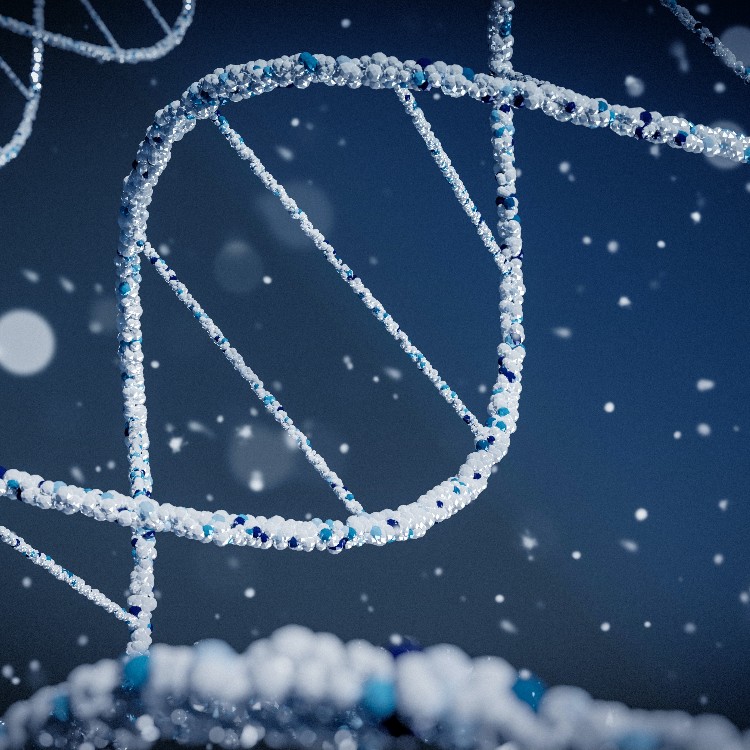
Mitochondrial Decline: Causes, Signs, and Solutions for Reversal
Mitochondria are vital cell organelles found in most cells in the body. They are responsible for cellular respiration and energy production. Taking into account that the mitochondria generate around 90% of the energy in the body, it is easy to deduce that preventing mitochondrial decline is essential for maintaining good health.
The Mitochondrial Theory of Aging
The mitochondrial theory of aging postulates that progressive mitochondrial decline is a central determinant of the aging process. Mitochondria possess their own genetic material (mtDNA) and exhibit a limited capacity for DNA repair mechanisms. They are susceptible to oxidative damage from reactive oxygen species (ROS). The theory explains that the gradual accumulation of genetically compromised mitochondria over time is a key factor in the aging phenotype. Damaged mitochondria affect the energy budget, which leads to cellular dysfunction.
This theory highlights the bidirectional relationship between mitochondria and aging. It suggests that mitochondrial dysfunction contributes to cellular senescence, while aging-related factors reciprocally exacerbate mitochondrial decline. The dysregulation of cellular energy production and the increased formation of reactive oxygen species are clear indicators of the correlation between mitochondria, aging, and metabolism.
What Is Mitochondrial Decline?
Mitochondrial decline refers to the gradual deterioration of mitochondria structure and function within cells. The major culprit for mitochondrial decline is the aging process, although many diseases can also contribute to this condition.
This phenomenon is linked to dysregulation of oxidative phosphorylation, the metabolic process responsible for generating adenosine triphosphate (ATP). As we age, mitochondrial respiratory chain components experience alterations, resulting in diminished electron transport chain efficiency. The accumulation of oxidative damage to mitochondrial DNA and proteins further exacerbates this decline, disrupting cellular bioenergetics. Ongoing research seeks to unravel the molecular mechanisms underlying mitochondrial decline with a view toward developing solutions to reduce its impact on cellular function and longevity.
Mitochondrial Decline: Causes
Mitochondrial decline can occur for various reasons associated with aging. Some factors that contribute to mitochondrial decline include:
- Aging: As cells age, the efficiency and function of mitochondria decrease. This decline in mitochondrial function leads to a reduction in energy production and further contributes to the aging process.
- Genetic mutations: Mutations in mitochondrial DNA or nuclear DNA that encode mitochondrial proteins also lead to mitochondrial dysfunction. These mutations can be inherited or developed over time.
- Environmental factors: Exposure to certain environmental stressors, such as toxins, pollutants, or oxidative stress, can damage mitochondria and contribute to their decline.
- Poor lifestyle habits: A sedentary lifestyle, a diet high in processed foods, and other unhealthy habits can negatively impact mitochondrial health.
- Diseases: Certain disorders, including neurodegenerative and metabolic diseases can lead to mitochondrial decline.
Mitochondrial Decline: Symptoms
Mitochondrial decline is characterized by a spectrum of symptoms stemming from impaired cellular energy production. One hallmark manifestation is a decline in physical performances, often accompanied by fatigue, muscle weakness, and exercise intolerance.
As mitochondria are located in various tissues, their decline can lead to diverse clinical pictures, including neurological symptoms such as seizures, ataxia, and cognitive impairment. The high energy demand of organs such as the brain, heart, and skeletal muscles renders them particularly susceptible to the effects of mitochondrial dysfunction. This can cause a range of symptoms, such as cognitive decline, cardiac abnormalities, and myopathy. Besides, mitochondrial decline may manifest through different metabolic issues. Given the heterogeneity of mitochondrial disorders, the clinical presentation can vary, which makes an accurate diagnosis challenging.
How to Reverse Mitochondrial Decline?
Mitochondrial damage can be reversed in early stages. Several vitamins, antioxidants and healthy strategies have been researched for their potential to mitigate mitochondrial dysfunction. Let’s take a closer look at them:
Food Supplements
Several vitamins and supplements have been investigated for their potential to mitigate mitochondrial dysfunction. Riboflavin (vitamin B2) serves as a precursor for flavin mononucleotide (FMN) and flavin adenine dinucleotide (FAD). They are crucial cofactors in mitochondrial electron transport chain pathways. As a strong antioxidant, coenzyme Q10 has also been explored for its potential to support mitochondrial health. Other than that, carnitine, responsible for fatty acid transport into mitochondria for beta-oxidation, also takes part in improving mitochondrial decline.
Food Based on Healthy Fats
Consuming foods high in omega-3 fatty acids have a beneficial effect on mitochondrial function. Omega-3 fatty acids contribute to membrane fluidity and enhance mitochondrial efficiency. Fatty fish, flaxseeds, avocados, and walnuts are great dietary sources of omega-3 fatty acids.
Exercise
Regular exercise has remarkable effects on mitochondrial biogenesis and function. Physical activity induces mild cellular stress and triggers adaptive responses that enhance mitochondrial capacity. Both aerobic and resistance training have positive effects on mitochondrial health, promoting improvements in overall cellular energy production.
To Sum Up
Mitochondrial decline is a serious condition that can gradually lead to severe metabolic and neurological disorders. Fortunately, with appropriate lifestyle changes, mitochondrial decline can be completely reversed.
Frequently Asked Questions
What simple sugar is broken down in the mitochondria?
In the cytoplasm, glucose undergoes the process of glycolysis to produce pyruvate. Pyruvate is then transported into mitochondria, where it goes through further metabolic reactions to generate energy in the form of ATP.
What foods repair mitochondria?
Foods rich in antioxidants and nutrients support mitochondrial health. Eggs, leafy greens, fatty fish with omega-3 fatty acids, nuts, olive and coconut oil, and avocado contain valuable compounds that can help reduce oxidative stress and support mitochondrial function.
Can fasting repair mitochondria?
Fasting activates mitophagy, the process of removing damaged mitochondria. This, in turn, promotes the regeneration of healthy mitochondria. As well as intermittent fasting, certain types of calorie restriction are also beneficial for mitochondrial health and function.
Do fit people have more mitochondria?
Yes, fit individuals have a higher density of mitochondria in their cells. This increased presence of mitochondria is correlated with increased energy generation, better cellular function, and improved metabolic fitness.
Does autophagy repair mitochondria?
Yes, autophagy is essential for mitochondrial repair. Autophagy is a cellular process of recycling dysfunctional cellular components. Inducing autophagy through several strategies, such as calorie restriction or intermittent fasting, is associated with better mitochondrial performance and overall cellular health.
What kills mitochondria?
Different factors can cause mitochondrial damage. The number one factor is oxidative stress, but environmental toxins, prescription medications, and prolonged exposure to stress are also big contributors. Apart from them, alcohol consumption and genetic mutations in mitochondrial DNA can also compromise mitochondrial integrity. These factors contribute to mitochondrial dysfunction and potentially lead to cell damage and death.
What age does mitochondrial disease start?
Mitochondrial diseases can manifest at any age, and their onset may vary widely. Some of these disorders become apparent in early childhood, with symptoms like developmental delays, muscle weakness, and neurological abnormalities. However, other signs may not surface until adolescence or adulthood. The clinical picture can range from mild to severe, with symptoms that affect various organ systems.
How do you test for mitochondrial decline?
Assessing mitochondrial decline involves a combination of clinical evaluations, laboratory tests, and specialized diagnostic procedures. The levels of lactate and pyruvate in the blood are good indicators of mitochondrial health. For the analysis of mitochondrial DNA mutations and their enzyme activities, a muscle biopsy is a widely used procedure. In certain cases, it is necessary to employ genetic testing to identify gene mutations associated with mitochondrial disorders.
What drugs should be avoided in mitochondrial disease?
Individuals with mitochondrial diseases should be cautious with drugs that deteriorate their function. Medications known to interfere with mitochondrias are:
- metformin
- certain antibiotics (e.g. aminoglycosides, tetracycline, and erythromycin);
- certain antiretroviral drugs;
- valproic acid (used in epilepsy);
- statins (cholesterol-lowering drugs).
If you want to avoid medications that may negatively impact your mitochondrial health, consult a physician with expertise in mitochondrial disorders.


